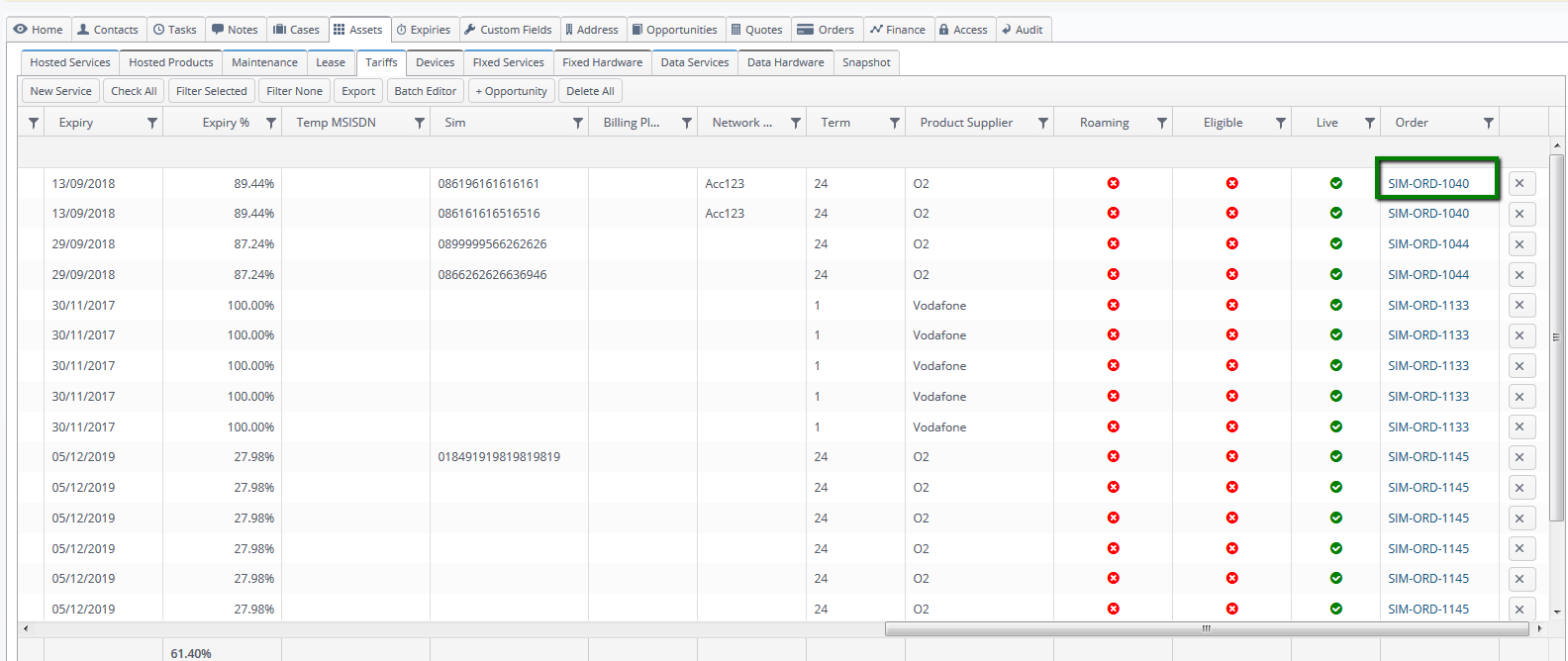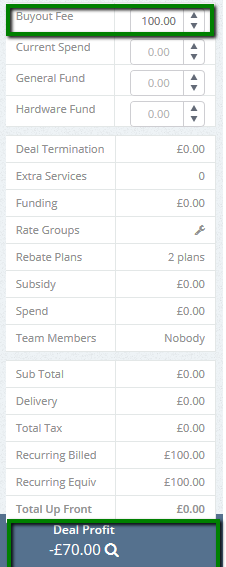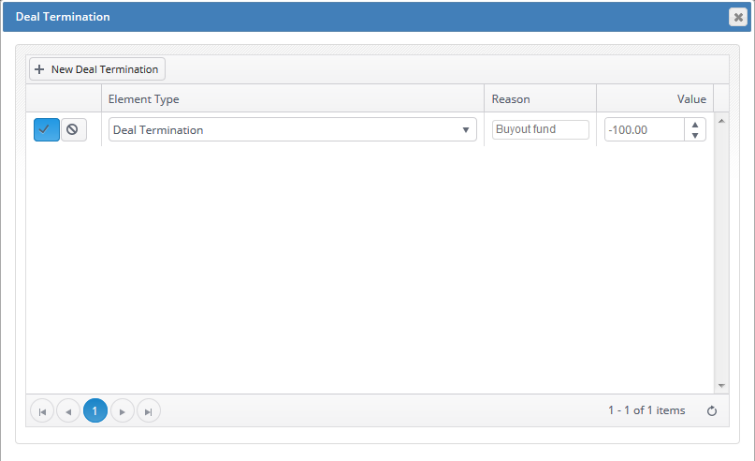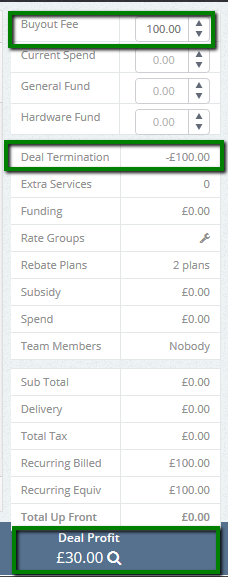What do we mean by contract extension?
A contract extension refers to the renewal of a service (currently provided by your business) that is still in contract for a period, typically <6 months.
A contract extension involves adding the remaining term to a new term of the agreement, as outlined in the example below:
A service has 6 months remaining on the contract.
The customer is willing to renew the service early with a standard 24 month term. The customer’s revised contract term is 30 months (6 remaining + 24 from the new service)
How do we reflect this in The Layer?
When extending a wholesale tariff, simply update the variable term field (the price book item must have variable term selected for this to be possible).

For a third party billed (mobile network) service, there are two options:
1. Allow end users to amend the anticipate Term (OGR) – this determines how many months of OGR will be added to the profits (if required)

2. Hide the ability to amend Term (OGR) in user settings and only edit the service term (i.e. 24 months to 30 months). This way, Term (OGR) will be set to the default service Term (OGR) (24 months or the value specified in the price book). This is the safest and best approach if the user doesn’t need to flexibly adjust this value.
Accounting for a Wholesale Increase or Loss of Profit
Depending on whether you want to account for an increase or decrease in profit, our deal termination value will allow users to add a positive or negative value to offset the previous contract’s profit figure. To calculate the profit per tariff you can go to the original SO (via the shortcut in assets as shown above) and review the SO finance report.

N.B. This is permissions based you will need to ask your line manager for the profit values from the report if you don’t have it.
If the renewal applies to all items in the sales order you can take the Total Recurring Margin (Term) value as the total profit across all lines. This means you will not need to multiply by the quantity of services as shown in the calculations below.

If the original order has additional recurring services that are not being renewed, then you will have to calculate the profit per item. This can be done by finding the difference between the Recurring Sell and Recurring Buy prices.

N.B. The values shown in these columns are always for one item no matter the quantity of items per line. Therefore, you should multiply the profit value by the no. of services that are being renewed across the remaining term.
Once you have for the profit per tariff you can then work out the amendment value you will have to add to Deal Termination.
For example, if you have 5 services with a current tariff of £10 profit per month and a new tariff of £20 profit per month. You can calculate the value that you are losing from the end of the previous contract by the following calculation.
Services - 5
Remaining Term – 6
New Contract – 24
Variable Term – 30 months
Deal Termination
= 5 services x 6 months x £10 month recurring sell = £300
Sales Order Adjustment (Removing the previous order/contract profit)
Alternatively, it is possible to amend the previous order profit. Go to the sales order (this can be found against one of the assets to be renewed by accessing the asset detail in the asset tab)

Add a sales order adjustment value to deduct the loss of revenue and, as the profit values will be included in the new quotation, no further action is needed.

An example on how to calculate the adjustment is shown below
SO adjustment
= 5 services x 6 months x £10 month recurring sell = £300
As in this case there is an increase in profit, the additional profit of the 6 months at £20 - £10 = £10 will be added to the quotation automatically so no further action is required.
If the tariff has decreased, then the difference in the profit value should be added to the adjustment value as well.
What if the tariff attracts an Ongoing revenue value (OGR) from a supplier?
OGR Term (amending the expected OGR payment months)
If users don’t have the Disable OGR Term permission set, they could update the OGR term months to increase the expected OGR term.
If you’d like to account for the full OGR profit, match the OGR term to the term of the agreement and then calculate the deal termination or sales order adjustment value to offset the anticipated profit from the previous contract/order.
Let’s review the above scenario for a tariff that attracts OGR.
i.e. 5 services with a current tariff £10 per month, new tariff £20 per month with an OGR 50%
Services - 5
Remaining Term – 6
New Contract – 24
Variable Term – 30 months
OGR – 50%
Deal Termination (offsetting the previous contract’s profit in the current quote)
= 5 services x 6 months x £10 month recurring sell *50% = £300/2 = £150
The users should deduct £150 to offset the profit
OR
SO adjustment (offsetting the previous contract’s profit in the previous sales order)
= 5 services x 6 months x £10 month recurring sell *50% = £300/2 = £150 against Service Ongoing Revenue
Again, the additional profit of the 6 months at £20 - £10 = £10 will be added to the quotation automatically so no further action is required here.
If the user does have the Disable OGR Revenue permission then the OGR term will default to the price book OGR term value. So, unless the OGR value has changed the previous contracts OGR profits will fulfil the extra profits not included in the new 24 month OGR term.
What is an out of contract renewal?
An out of contract renewal is when the previous contract has been fully satisfied and you have continued to provide the customer with the previous deal however the profits have not been reflected in the Layer.
The renewal will calculate the correct term and OGR term as set by the price book. If the contract has expired for some time, then the profitability associated with any ongoing margin (OGR or wholesale) won’t be accounted for in SO reporting. Most users simply ignore this, however if you want to add this in, count the number of months that the service has been out of contract for and calculate the profit {[(recurring sell – recurring buy) * term] or [recurring sell *OGR *term] depending if wholesale or OGR respectively} and add it in as a negative deal termination in order to make the value positive and add the unaccounted for profits.
Alternatively, you could add a positive SO adjustment to the original order to reflect the additional profits.
What happens if the supplier charges the customer a buyout fee?
If the supplier charges a termination fee, and the customer will be paying for this, it should be added to the buyout area of the quote. This will pull the value through to the quotation that will be sent to customer.

You will then need to add a negative deal termination value to balance this off in the profits as the customer will be paying this and not you.


What happens if we’re absorbing the supplier charges and the customer won’t be paying the fee?
If the supplier charges a termination fee, and the customer will not be paying for this, it should be added to the deal termination area of the quote. This will deduct the supplier costs in the Layer quotation. If the customer will receive the charge on their bill and they will reclaiming this value from you, then this should be simply added to the buyout area.
